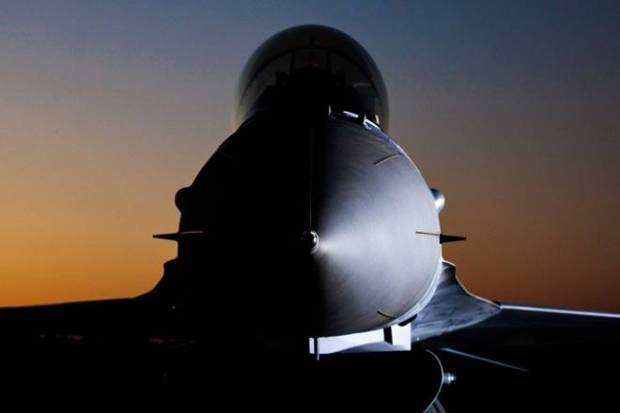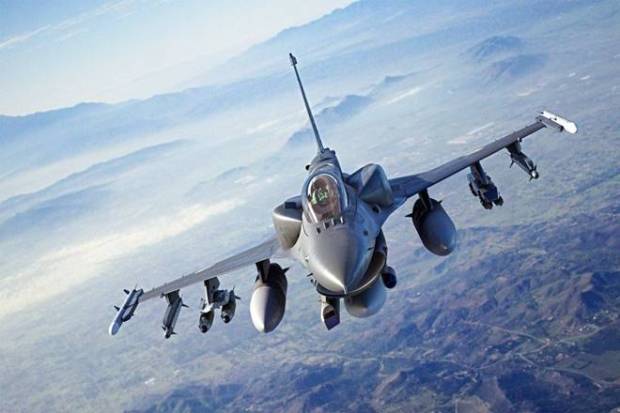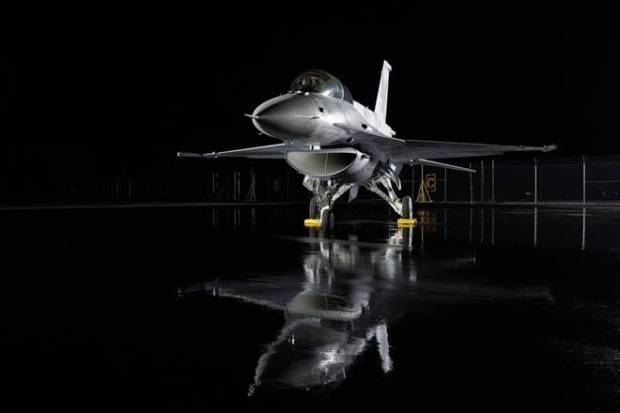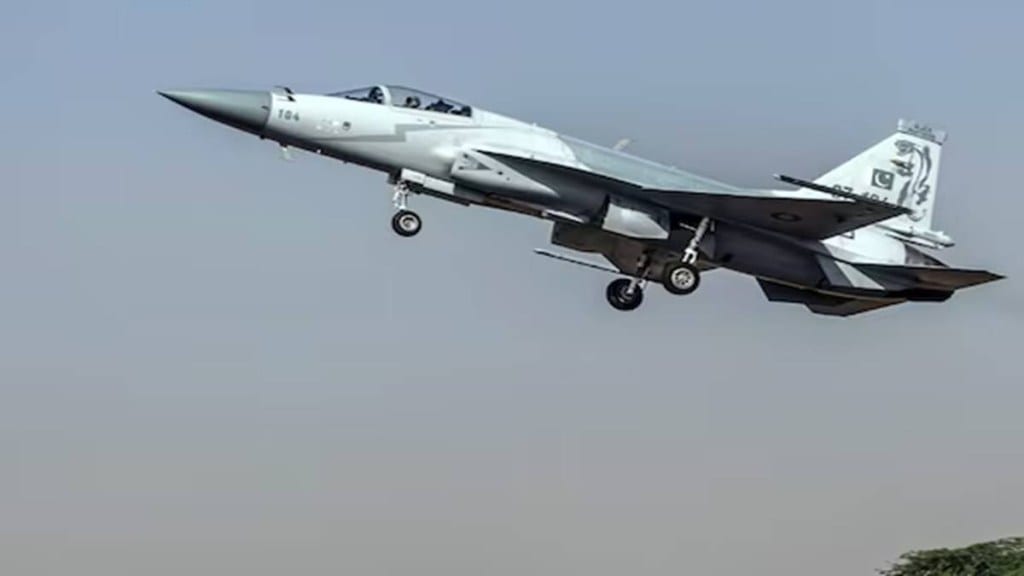The Argentine Air Force (FAA) is looking to purchase 18 fighter jets to replace its old inventory. Earlier this month a team from state-owned Hindustan Aeronautics Limited (HAL) in the presence of the Indian ambassador to Argentina Dinesh Bhatia and top military officers of the Argentine made a presentation. This was the third visit of HAL officials to the South American nation since 2022.
A Trio of Contenders: The Stylish Selection
In August 2022, Argentina made it abundantly apparent that it was considering purchasing the Indian fighter LCA Tejas Mk 1A. On the other hand, the FAA did not raise this issue again in 2023. Instead, they showed interest in the Sino-Pakistani JF-17 Thunder Block III fighter and North America’s offer to purchase 32 second hand F-16AMs that Denmark had previously utilised.
Sleek and Sophisticated: The Danish F-16

Denmark stated on February 24 that it is “open” to sending F-16 fighter jets, about 30 of them, to Ukraine to aid its war effort against the Russian invasion, the Danish defence minister told state broadcaster DR. This technically rules out the subject of the transfer of these F-16s to the FAA. However, until it happens, it is worthwhile to compare it with the other competing fighters.
The F-16 AM “Fighting Falcon” from General Dynamics is a single-engine, single-seat Air Superiority Fighter. It underwent Mid Life Update (MLU) in the early 1990s according to reports. To enhance performance and maintainability the older cockpits and avionics of F-16s have been upgraded to the same standards as the new build F-16C Block 52s. The updated F-16s designated F-16AMs or F-16A Block 15 MLUs, are also compatible with AMRAAM long-range radar-guided missiles.
The F-16 AM has extraordinary capabilities relative to its price, despite being relatively expensive. It has a tight turning radius, four Fire-and-Forget AIM-120A AMRAAM, two short-range AIM-9L Sidewinder missiles and an Electronic Countermeasure (ECM). The F-16 AM is less expensive than the Soviet-era fighters, such as the Su-27 and MiG-29 series or the American F-15C Eagle. The aircraft also carries the marginally less capable AIM-9L instead of the AIM-9M. It can fire Hughes AGM-65G Maverick air-to-surface missiles for ground attack missions and other unguided bombs.

In addition to LANTIRN pods, Danish F-16s carry an extensive arsenal of air-to-ground munitions, including GBU-49/GBU-54, GBU 12/24, GBU-31 v1/v3, and GBU-38/39, as well as a 20mm gun. Compared to its Argentine tender rivals, the APG-66(V2) Doppler radar is technologically outdated. Regarding avionics, the Danish fighter is equipped with an inexpensive digital quartz watch next to the HUD, an advanced LINK 16 tactical data link, GPS, an advanced EWMS (Electronic Warfare Management System) and Joint Helmet Mounted Cueing System.

The plane can be refuelled mid-air. The payload capacity is 5,450 Kg on its nine pylons. It can fly about 860 km for combat. The US has yet to offer a proposal to Argentina officially.
Innovative and Invincible: The Sino-Pak J-17 Block 3
The JF-17 Block 3 has advanced avionics and flight control systems, an active electronically scanned array (AESA) radar, a combination of the most advanced Chinese short-range and beyond-visual-range missiles, and much more. It has participated in more international bids than the Indian LCA Tejas but has lost the most important ones. The largest operator, Pakistan, has recently acquired more sophisticated J-10C fighters from the Chinese fighter stable. Myanmar only operates 16 and was recently grounded. Nigeria has ordered just three units.
Argentinians have a budget and a problem, and the J-17 appears to be the most affordable solution. In addition, the aircraft has Chinese and Russian equipment, which is a respite for Argentina compared to the embargoed British components found in Danish F-16s and Indian LCA Tejas.
A single RD-93MA engine powers the JF-17, has a top speed of 1,960 kilometres per hour, and a combat range of 1,352 kilometres. The external payload capacity of the JF-17 is 3,629 kilograms.
There are seven on the Thunder: four under each wing, two on each wingtip, and one under the fuselage. The Chinese aircraft has HOTAS (Hands-on Throttle and Joystick) systems and helmet-mounted visors for its pilots. It can track air, land, and maritime targets. It has the combat capacity to track up to forty targets.
However, with the introduction of the new JF-17 variants, the KLJ-7 V2 for Block II was upgraded with an extended tracking range.
It can then attack ground and surface targets with various weapons, including laser-guided and unguided explosives and air-to-surface missiles. The JF-17’s seven hard points allow it to carry air-to-air, air-to-surface, and air-to-ground munitions. Its Beyond Visual Range (BVR) firepower comprises PL-12 and PL-15 missiles. The secondary armament comprises the 23mm GSh-23-2 or 30mm GSh-30-2. The most recent iteration of the JF-17 can now refuel while in flight. Its cockpit features evacuation seats designed by Martin Baker. The cost of this deal is about US$664 million.
The Pinnacle of Performance: HAL LCA Tejas
The Indian offering LCA Tejas Mk 1A is the most advanced aircraft among its competitors. It has a multi-mode AESA radar, EW, modern fly-by-wire controls, a carbon composite airframe, and a wholly modern cockpit. If India can replace 50 British components, the plane offers Argentina a French-inspired design with US engines and a range of weapons from India, the US, Russia, France and Israel.
The HAL Tejas is the smallest and lightest supersonic multi-role combat aircraft in the world and has a delta wing configuration. It has a load factor of +8/-3.5G (tests reached up to 8.5G). Based on the information available in the public domain, the maximal angle of attack is 24 degrees (tests reached 26 degrees), the service ceiling is 50,000 feet, and the maximum speed is 1.6 Mach. The minimum speed is one hundred kph. The initial instantaneous turn rate (ITR) is nearly 30º per second, and the sustained turn rate (STR) is between 15º and 16º per second. The smallest achievable rotating radius is 350 metres.
It employs a four-axis Fly-by-Wire system with a control computer (DFCC, Digital Flight Control Computers) with four channels, each with its own power source, so up to three of them can malfunction. The computer has a MIL-STD-1553B bus and interfaces with the multifunction displays of the pilot. It has HOTAS controls, two liquid crystal multifunction displays on the Mk1 and three on the Mk1A, a Head-Up Display (HUD), and a control panel in front of the HUD and central display. It has electronic warfare systems, an IFF, VHF/UHF countermeasures resistance, and an air-air and air-ground data link. This apparatus and radar are integrated into three 1553B buses by a locally developed 32-bit mission computer. The current ELTA El/M-2052 synthetic aperture radar will be in future replaced with the locally produced Uttam AESA radar.
As for missiles, only the R-73 missiles, the Rafael Pyton 5 and the Derby, have been integrated. Astra BVR missiles have already been tested on the aircraft. It can carry Rafael Litening target designation pod and laser-guided bombs from the US, France, Russia and India. Tejas can fire multiple air-to-surface missiles. One of the biggest plus points will be the integration of Brahmos NG in future.
In addition, it has a 23 mm GSh23 twin-tube cannon of Russian origin but is also produced in India. LCA Tejas’ combat range is about 500 km but features a refuelling probe. It can carry an additional tank of up to 1,200 litres on the internal supports of each wing or 800 litres on the external supports, plus one of 725 litres under the fuselage, albeit at a high cost to its ability to carry up to 3,500 kilograms of armaments.
Argentina can protect itself from the large power pressures of the United States and China by purchasing LCA Tejas. Despite China’s ability to provide a politically risk-free fighter, the jet has yet to make significant inroads into the international market. In case the United States successfully convinces the United Kingdom to lift its embargo on selling British-made parts, also present in the F-16s, to Argentina; in that case, it will be a major step forward for both the United States and India in the competition.

